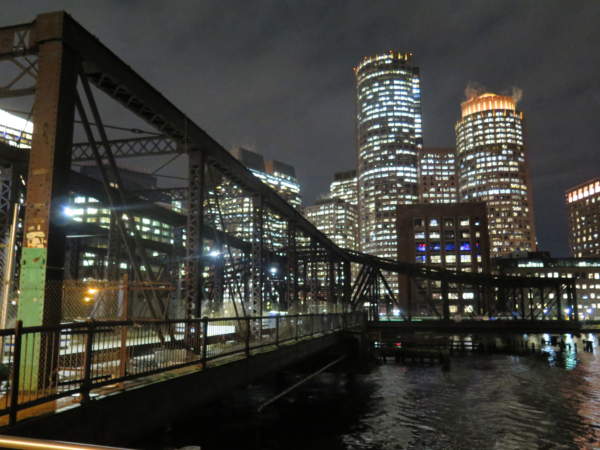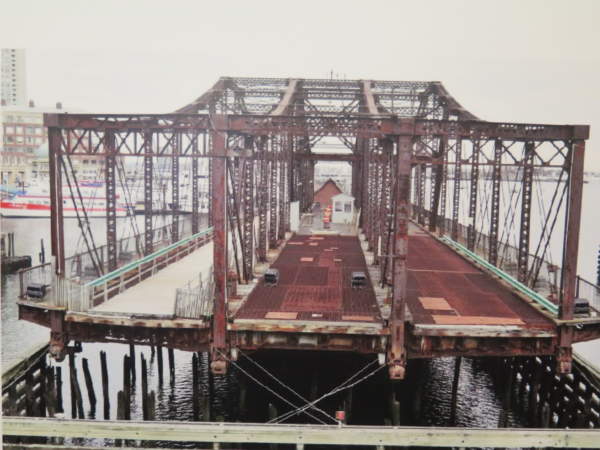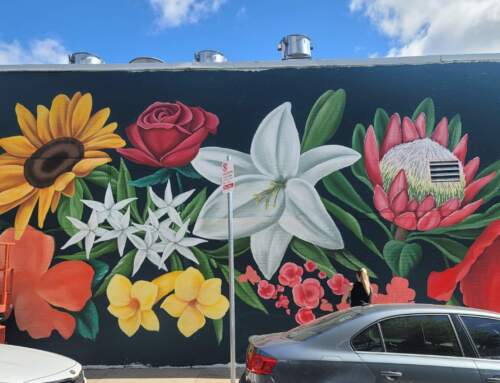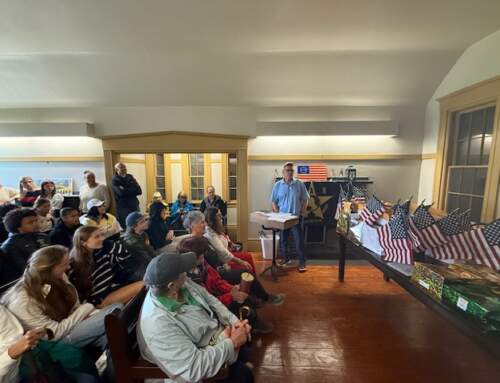by Rick Winterson
It is common knowledge that the old Northern Avenue Bridge has been completely taken out of service, after it was closed for use by pedestrians and bicyclists to cross the Fort Point Channel. The bridge, which was the original structure, is simply too corroded by more than a century of exposure to the elements and to salt water, as well as being stressed and strained by constant daily use as a drawbridge. Actually, the term for this particular type of movable bridge is “swing bridge”, even though its human operator was called a Draw Tender.
Currently, three other well-traveled bridges serve the very rapidly developing South Boston Seaport/Waterfront area – the Summer Street, the Congress Street, and the Evelyn Moakley Seaport Boulevard Bridges. Restoring the Northern Avenue Bridge would open a fourth bridge that would be about 300 feet north of the 25-year-old Moakley Bridge, very near the end of the Fort Point Channel.
A meeting at the end of November was held in the Seaport’s District Hall. An eight-member panel was on hand to “walk through” the numerous technical and public usage considerations involved with replacing the Northern Avenue Bridge in some way. There were three panelists from the City of Boston (engineers and the Chief of Streets), three consultants (engineers and an architect), and two from the so-called Mayoral Advisory Task Force. This latter group is 17-member cross section of the City of Boston, which has been meeting since May. Its specific aim is to advise the City on the preferred alternative to replacing the Northern Avenue Bridge.
The initial project efforts involved briefings with nine community organizations, as well as meetings with neighbors of the Northern Avenue Bridge and elected officials. This preliminary work resulted in four, broad-but-key conceptual areas that formed the foundation and agenda of the November meeting. The meeting panel addressed all four of these concepts: strengthen Resiliency, honor History, improve Mobility, and create a Destination – the latter concept was also referred to as “Placemaking”.
“Resiliency” is a word now in fashion. It means durability combined with flexibility, and was made a topic because of the flooding that occurred during last January’s northeaster storms that flooded much of the Seaport. Basically, it means that any new bridge for Northern Avenue will have to be built higher, and will have to be protected against corrosion. “History” means building something that evokes the past. The remains of the old Northern Avenue Bridge are visibly and massively corroded away. Furthermore, it was first built to serve Fan Pier, a rail freight yard now long gone. The only concession here to history would be limited to structural steel shaped like the original bridge.
Mobility would be an important feature of any new bridge. How much of the bridge’s traffic surface would be devoted to pedestrians and bicycles, and how much to cars and trucks. Remember that the Seaport, and indeed all of South Boston, is a peninsula (you must leave the same way you entered). Also, remember that there is an industrial area, a major port area, and the Innovation and Design Building far down this peninsula, with entirely different traffic patterns.
Finally there is Destination/Placemaking. One drawing of a so-called “Plus (+)” Bridge had a linear park at right angles to the new bridge itself. This was intended to be a walking park along the axis of Fort Point Channel over to the Moakley Bridge. Interesting yes, but should any new bridge over the Fort Point Channel be anything but an efficient means of crossing it? This led to other questions that occurred to South Boston Online.
This was really the first public meeting about the proposal to replace the Northern Avenue Bridge. Basically, the new bridge will be another “connector” to the Financial District, Downtown Boston, and the North End. One question that occurred to us during the meeting – three bridges on Summer Street, Congress Street, and Seaport Boulevard already exist – is a fourth really necessary? And where does a proposed new Northern Avenue Bridge sit in the City’s priorities? Clearly, money for expenditures is limited, so would a new bridge to Long Island come first? Should a new bridge be restricted to bicycles, pedestrians, and HOVs?
And there was talk (unconfirmed) about a problem with the Evelyn Moakley Bridge, and the cracks that are appearing around the bridge’s base on the Seaport side of the span. What would it mean if that bridge needed extensive repairs and had to be shut down??
Much remains to be figured out. South Boston Online will keep you posted.

The skeleton of the original Northern Avenue Drawbridge contrasts bleakly with Boston’s bright skyline.

– A photograph of how bad the old Northern Avenue Bridge has corroded away. Clearly unsafe for any purpose except scrap.





